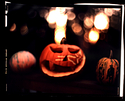So contrast comes down to only if I can get all of the range in the shot or not.
For me, that isn't contrast, it is Subject Luminance Range (SLR), referred to by many as Subject Brightness Range (SBR).
Plus of course how that SLR/SBR translates into dynamic range on the medium I'm exposing.
Which in turn translates on to the medium I am presenting.
For me, contrast is how the image ends up appearing - how adjacent but slightly differing tones look - which relates to the slope of the curve of the film/paper, and depends on:
1) the subject's tones;
2) the character and quantity of the light;
3) the contrast characteristics of the film, combined with the development processes, including any adjustments available; and
4) the contrast behavior of the presentation medium, including available adjustments.
There are a lot of opportunities in that process to take steps to control contrast. Sometimes I wait until the end before I make any adjustments - variable contrast paper is great for that - and other times I tweak things as I go.
I don't really think of the use of camera filters as being for contrast control
per se, although haze/UV filters and polarizing filters can help eliminate contrast reducing effects.
To me, something like a green filter is more a tool for adjusting the tonal relationships in a black and white negative, not for adjusting the contrast within those relationships.
I will adjust developing time if a roll was exposed in low contrast conditions or high contrast conditions.
I'll also (rarely) use a push development to squeak out a bit more image when light levels are low, but generally only if the conditions aren't particularly contrasty to start with.
I do use a lot of localised contrast control when I darkroom print.






